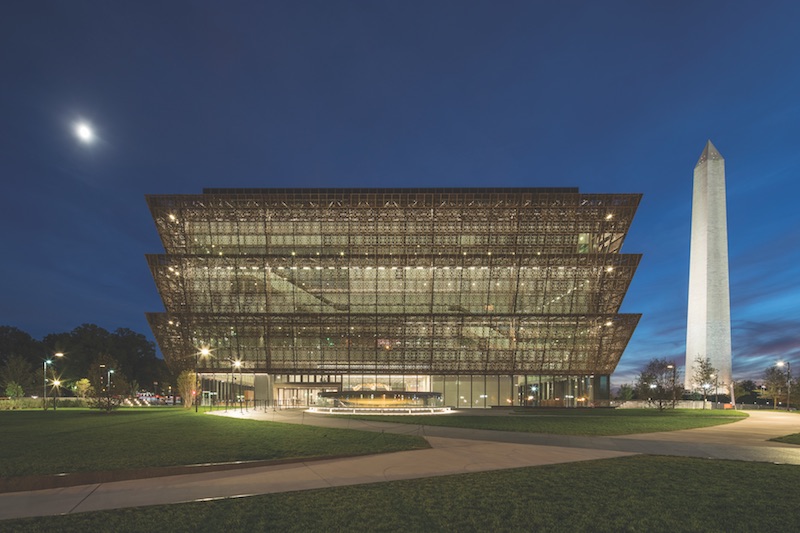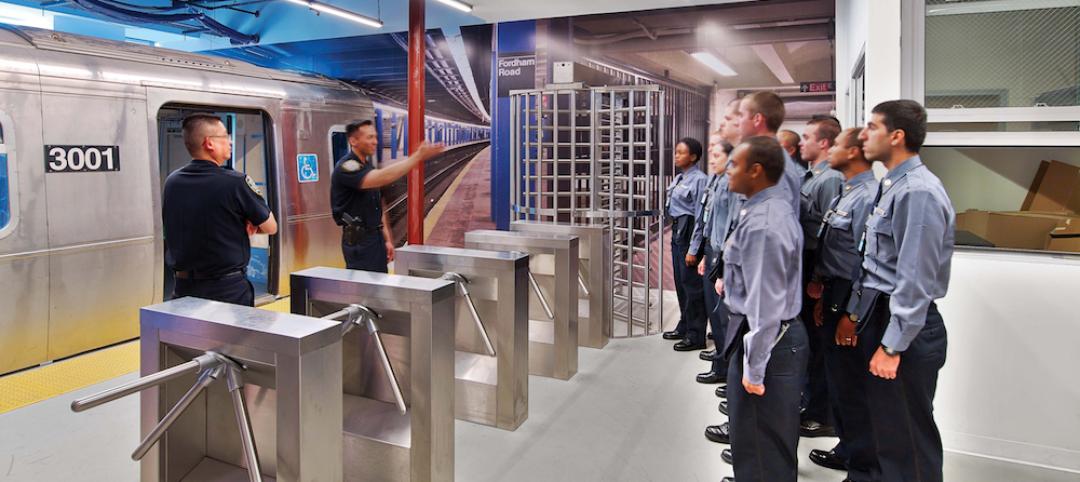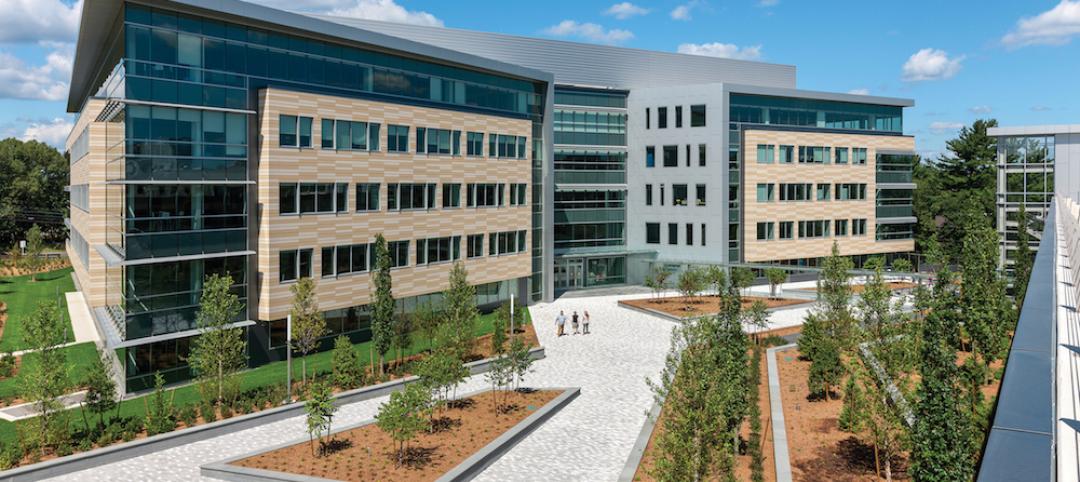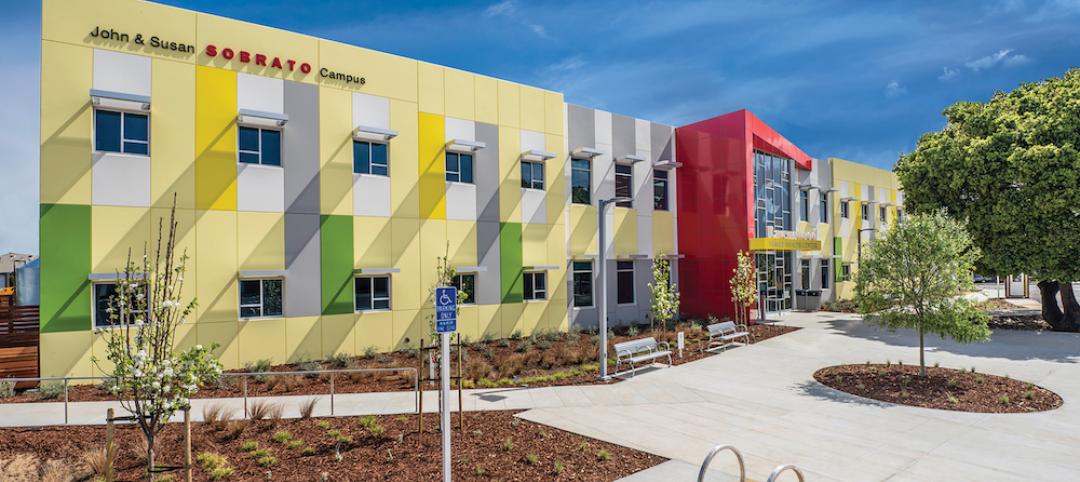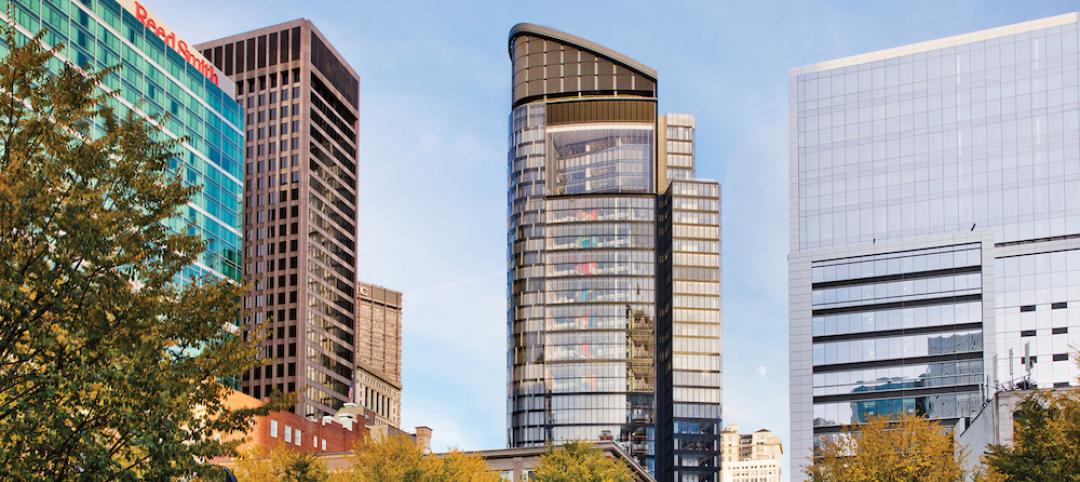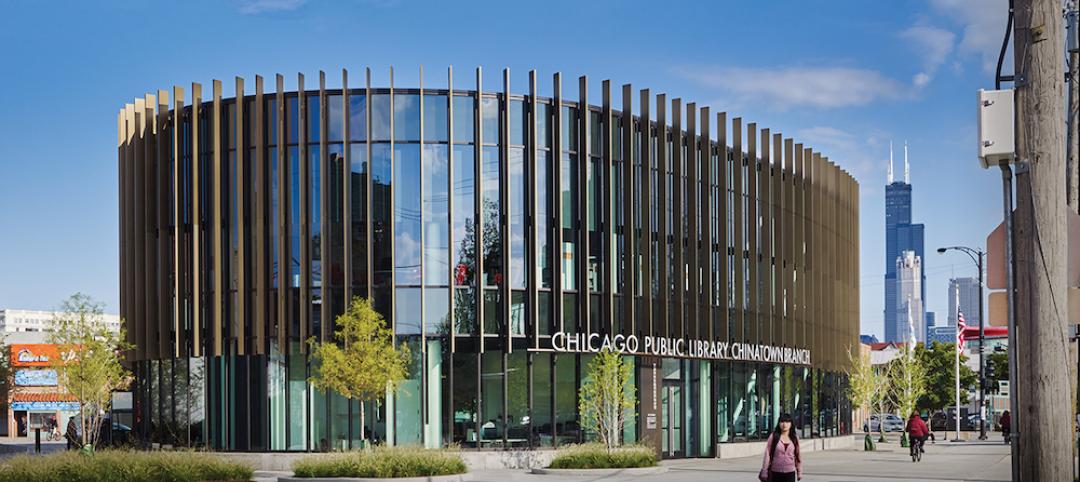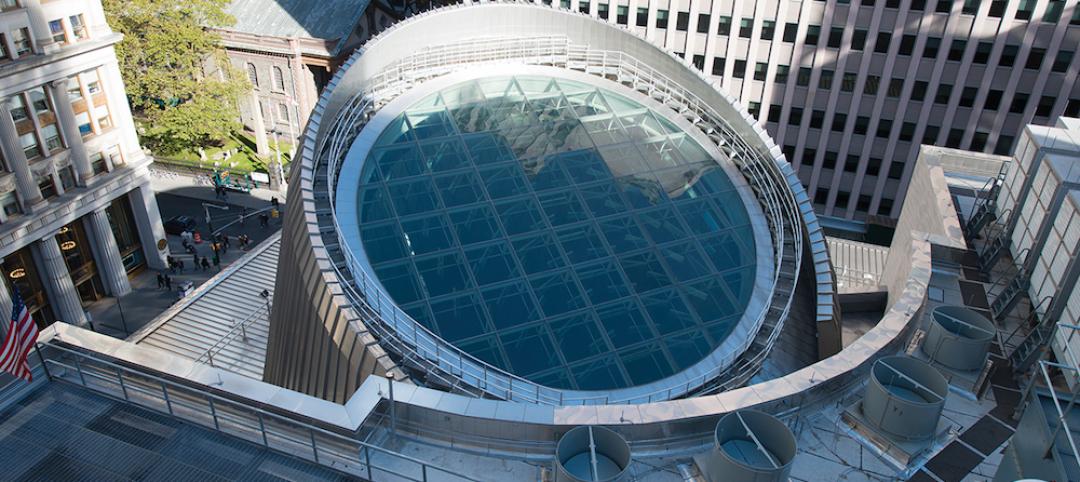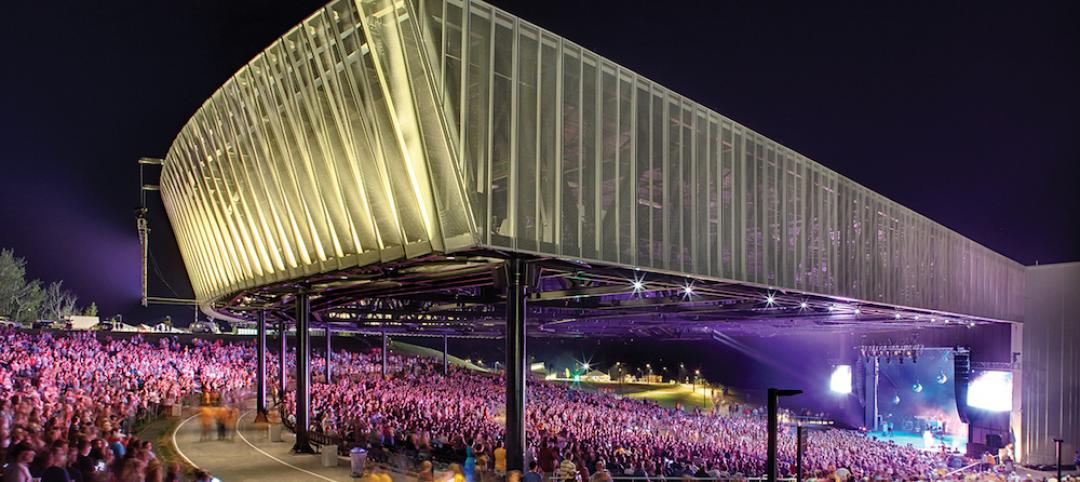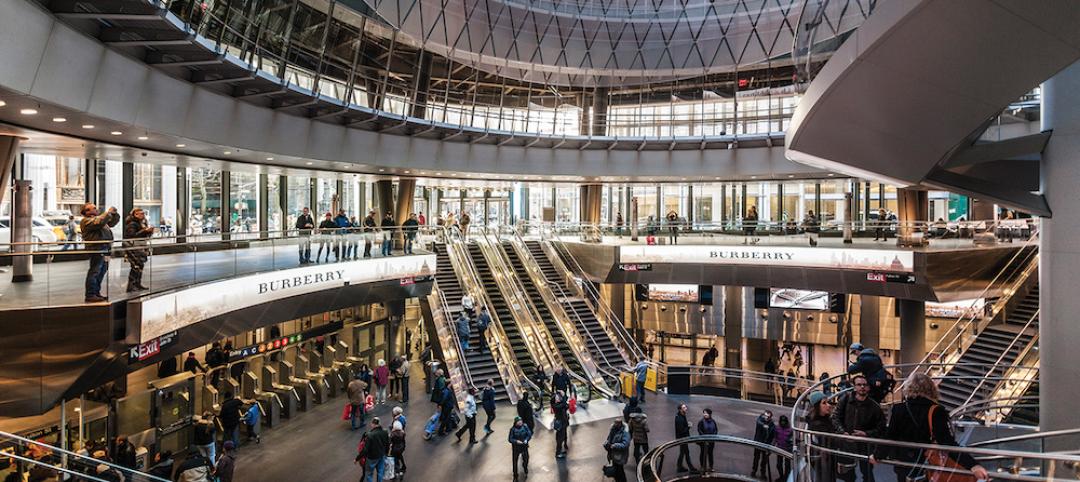This much-ballyhooed project, which sits on the last available lot within the National Mall in Washington, D.C., was first conceived 100 years ago. Its 56-month realization involved three GCs, four architects, more than 30 consultants, 200 subcontractors, and 5,000 craft workers.
At almost every turn, the Building Team faced obstacles, not the least being the District of Columbia’s high water table. Three-fifths of the museum is below grade, and its construction entailed a 70-foot-deep excavation of 350,000 cubic yards of dirt. The Building Team developed a support-of-excavation system that could withstand water pressure of 37,000 pounds per sf.
To meet the client’s request that all ground-floor and above-grade spaces be column free, the Building Team used four steel/cement structural cores to support the building’s superstructure and façade.
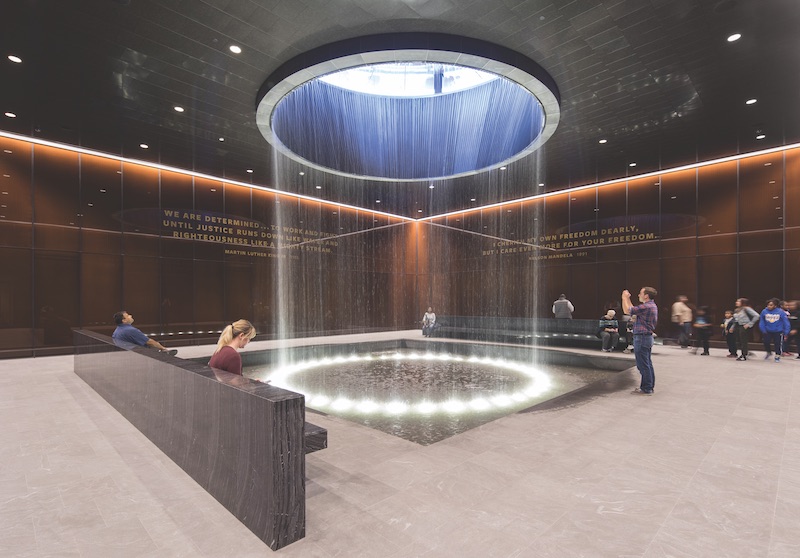 Its below-ground attractions include a Contemplative Court, illuminated by natural light coming through an oculus onto a waterpool. Courtesy Brad Feinknop.
Its below-ground attractions include a Contemplative Court, illuminated by natural light coming through an oculus onto a waterpool. Courtesy Brad Feinknop.
The museum, whose silhouette is designed to resemble a West African crown, is distinguished by “The Corona,” a striking curtain wall consisting of 3,600 panels, modeeld after ironwork in the American South. The original cast-bronze design was deemed too expensive, so the Building Team chose cast-aluminum panels that reduced the cost by $20 million. It also experimented with 20 colors and finishes to achieve the façade’s bronze tint.
Natural light streams through a 20-foot-diameter oculus into an underground Contemplative Court. Outside, a 200-foot-long porch, supported by two 32-ton columns, cantilevers 40 feet over a water feature.
The museum houses 36,000-plus artifacts and was literally built around two of them—an 80-foot-long Pullman railway car, and a guard tower from Louisiana’s notorious Angola Prison—that two 550-ton cranes lowered into place early in construction.
Building Team – Submitting firm, contractor: Clark Construction Group; Owner: The Smithsonian Institution; Architects: Adjaye Associates, Davis Brody Bond, SmithGroupJJR, The Freelon Group; Interior architects: Perkins+Will, Davis Brody Bond (below grade); Exhibit designer: Ralph Appelbaum Associates Structural engineers: Robert Silman Associates (below grade), Guy Nordenson and Associates (above grade); MEP engineer: WSP USA; General contractor: Joint venture of Clark Construction, Smoot Construction, and H.J. Russell & Company' Construction manager: McKissack & McKissack; Landscape architect: Gustafson Guthrie Nichol
General Information – Size 409,000 sf Cost $413 million Construction time January 2012 to September 2016 Delivery method Design-bid-build
Related Stories
Building Team Awards | May 27, 2016
Big police academy trains thousands of New York's finest
The Police Training Academy in Queens, N.Y., consists of a 480,000-sf academic/administration building and a 240,000-sf physical training facility, linked by an aerial pedestrian bridge.
Building Team Awards | May 26, 2016
Cimpress office complex built during historically brutal Massachusetts winter
Lean construction techniques were used to build 275 Wyman Street during a winter that brought more than 100 inches of snow to suburban Boston.
Building Team Awards | May 25, 2016
New health center campus provides affordable care for thousands of Northern Californians
The 38,000-sf, two-level John & Susan Sobrato Campus in Palo Alto is expected to serve 25,000 patients a year by the end of the decade.
Building Team Awards | May 24, 2016
Los Angeles bus depot squeezes the most from a tight site
The Building Team for the MTA Division 13 Bus Operations and Maintenance Facility fit 12 acres’ worth of programming in a multi-level structure on a 4.8-acre site.
Building Team Awards | May 23, 2016
'Greenest ballpark' proves a winner for St. Paul Saints
Solar arrays, a public art courtyard, and a picnic-friendly “park within a park" make the 7,210-seat CHS Field the first ballpark to meet Minnesota sustainable building standards.
Building Team Awards | May 20, 2016
Pittsburgh's Tower at PNC Plaza raises the bar on high-rise greenness
The Building Team designed the 800,000-sf tower to use 50% less energy than a comparable building. A 1,200-sf mockup allowed the team to test for efficiency, functionality, and potential impact on the building’s occupants.
Building Team Awards | May 19, 2016
Chinatown library unites and serves two emerging Chicago neighborhoods
The 16,000-sf, pebble-shaped Chinatown Branch Library was built at the intersection of new and old Chinatown neighborhoods. The goal is for the building to unite the communities and serve as a catalyst for the developing area.
Building Team Awards | May 19, 2016
NYC subway station lights the way for 300,000 riders a day
Fulton Center, which handles 85% of the riders coming to Lower Manhattan, is like no other station in the city’s vast underground transit web—and that’s a good thing.
Building Team Awards | May 16, 2016
Upstate New York performing arts center revives once-toxic lakefront site
Early coordination, prefabrication, and judicious value engineering contributed to the accelerated completion of the Onondaga Lakeview Ampitheater, a Upstate New York design-build project.
Building Team Awards | May 16, 2016
12 building projects that represent the best in AEC team collaboration
A busy, light-filled Manhattan subway station and a pebble-shaped Chicago library are among the winners of the 19th annual Building Team Awards.


